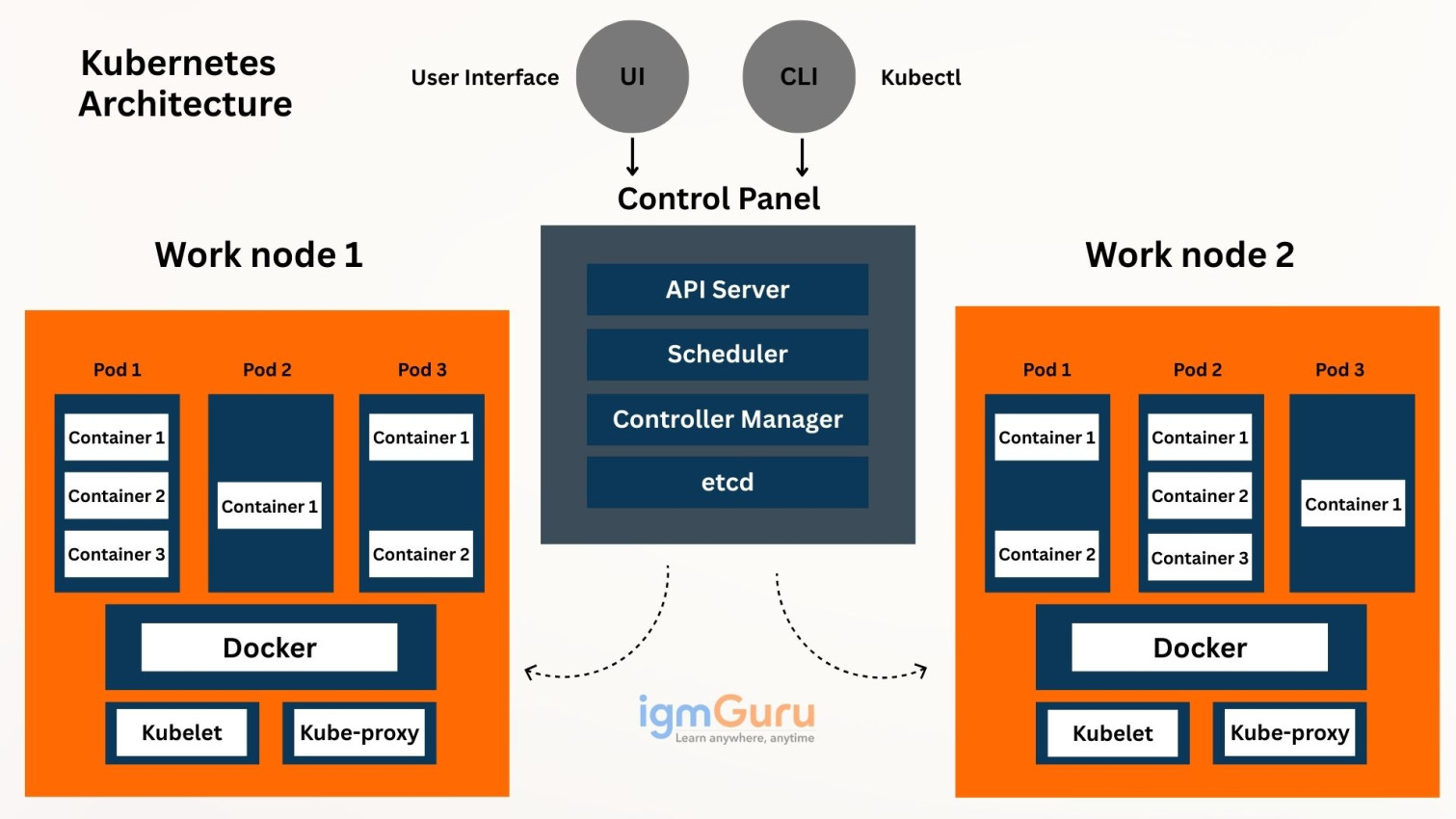Why Every DevOps Engineer Should Learn Kubernetes
August 15, 2025
Kubernetes has become the backbone of modern infrastructure. It simplifies deployment, automates scaling, and ensures applications remain highly available even under fluctuating workloads. Businesses today rely on Kubernetes to streamline operations, reduce manual intervention, and maintain agility in a fast-paced technological landscape.
For DevOps engineers, Kubernetes is far more than just a container orchestrator—it’s a full ecosystem that manages rollout, rollback, scaling, networking, and service discovery automatically. This reduces human error, speeds up deployment cycles, and ensures consistent environments across development, staging, and production.
As organizations increasingly adopt microservices and cloud-native architectures, Kubernetes ensures that applications are portable, resilient, and future-proof. It works seamlessly with CI/CD pipelines, infrastructure-as-code (IaC) tools like Terraform and Helm, and monitoring solutions such as Prometheus, Grafana, and ELK Stack. Engineers who master Kubernetes can handle complex, distributed systems confidently while maintaining performance and uptime.
One of Kubernetes’ key strengths is its ability to optimize resource usage. Through intelligent scheduling and autoscaling, workloads can be distributed efficiently across nodes, saving cloud costs and reducing over-provisioning. Multi-cloud strategies also become easier to implement, giving businesses flexibility to deploy applications across AWS, Azure, or Google Cloud Platform without being locked into a single provider.
Kubernetes also emphasizes reliability through self-healing mechanisms. Pods that fail are automatically restarted, crashed nodes are replaced, and applications are load-balanced to ensure uninterrupted service. Persistent volumes allow stateful applications, databases, and storage-intensive workloads to operate smoothly, making Kubernetes suitable for both stateless and stateful applications.
Security and compliance are another advantage. Kubernetes supports role-based access control (RBAC), network policies, and secret management to protect sensitive data and enforce organizational standards. Combined with DevSecOps practices, Kubernetes enables teams to build secure, automated pipelines that meet regulatory and industry requirements.
Learning Kubernetes is now a must for DevOps professionals, site reliability engineers (SREs), and cloud architects. Knowledge of pods, deployments, services, ingress controllers, config maps, secrets, and persistent storage equips engineers to design scalable, fault-tolerant systems. Pairing Kubernetes with Docker, cloud platforms, CI/CD pipelines, and monitoring tools unlocks the full potential of cloud-native applications.
The Kubernetes ecosystem continues to evolve with features like serverless frameworks (Knative), service meshes (Istio, Linkerd), and advanced operators for managing stateful workloads. Staying up-to-date with these trends ensures that DevOps engineers remain competitive and capable of delivering resilient, high-performing applications.
Simply put: if Docker gave us containers, Kubernetes gave us the power to manage them at scale. In 2025, mastering Kubernetes is not optional—it’s a critical skill that differentiates proficient DevOps engineers from the rest. With it, you can deploy faster, recover from failures automatically, and build cloud-native applications that are scalable, secure, and future-ready.
Kubernetes also promotes standardization across development teams. By defining infrastructure as code and declarative configurations, teams can avoid environment drift and reduce inconsistencies between development, staging, and production environments.
For enterprises, Kubernetes enables faster innovation cycles. Features like rolling updates and canary deployments allow new features to be released gradually, minimizing risk while collecting real-time feedback from users.
The vibrant Kubernetes community contributes to its rapid growth and adoption. Open-source tools, plugins, and extensive documentation make it easier for engineers to integrate Kubernetes into existing toolchains and leverage best practices from industry leaders.
Monitoring and observability are made simpler with Kubernetes. Integration with Prometheus, Grafana, and ELK Stack enables real-time metrics, logging, and alerting, helping DevOps teams detect and resolve issues before they impact end-users.
Kubernetes also supports hybrid and multi-cloud deployments, allowing organizations to distribute workloads across private and public clouds. This flexibility reduces vendor lock-in and provides resilience against regional outages.
Security remains a top priority in Kubernetes environments. Role-Based Access Control (RBAC), network policies, secrets management, and pod security standards ensure that applications run securely and comply with organizational and regulatory requirements.
Investing time in mastering Kubernetes is a long-term career asset. DevOps engineers with Kubernetes expertise can lead cloud migration projects, implement robust CI/CD pipelines, and design architectures that scale with business growth.
In addition, Kubernetes fosters automation and efficiency. With automated scaling, self-healing capabilities, and built-in load balancing, engineers spend less time firefighting and more time building features and optimizing workflows.
Learning Kubernetes is not just about managing containers; it’s about understanding distributed systems, cloud-native patterns, and resilient architecture design. These are skills that remain relevant as the tech industry continues to evolve.
Finally, Kubernetes integrates seamlessly with other emerging technologies such as serverless computing, AI/ML workloads, and edge computing, making it a foundational skill for the next generation of cloud-native applications.
— See you, Volkrin